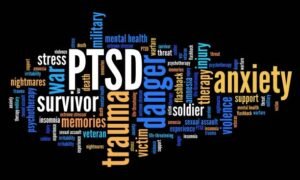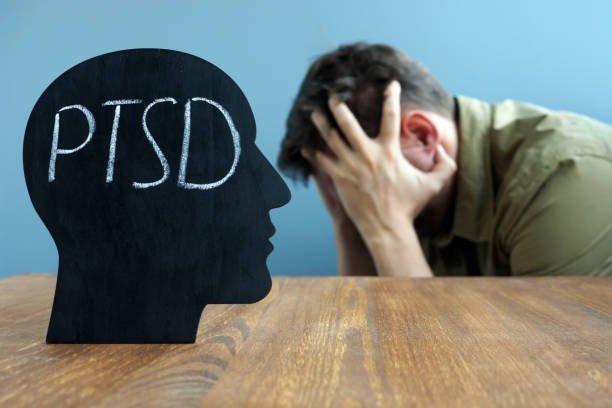Living with Post-Traumatic Stress Disorder (PTSD) can feel like walking through life with a hidden wound that never fully heals. For many people, the most challenging part of PTSD is not the past event itself, but the way memories of it come back—suddenly and unexpectedly. These moments, known as “triggers,” can bring intense emotional reactions that are hard to manage. Understanding what triggers feel like, how they affect daily life, and how to cope with them can help you or someone you love take steps toward healing and peace.
What Is PTSD?

PTSD is a mental health condition that some people develop after experiencing or witnessing a traumatic event. This might be a car accident, a natural disaster, war, abuse, assault, or any situation where someone felt extreme fear, helplessness, or horror. PTSD doesn’t always appear right after the event. It can show up weeks, months, or even years later. People with PTSD often relive the trauma through nightmares, flashbacks, or constant worry. They may avoid things that remind them of the event and feel constantly on edge.
What Are PTSD Triggers?
Triggers are things—such as sights, sounds, smells, places, or even thoughts—that remind someone of their trauma. These reminders can bring back strong emotions, physical reactions, or memories. A trigger might be something obvious, like a loud noise reminding a veteran of gunfire. But it can also be something subtle, like the scent of a certain perfume, a specific type of music, or even a certain time of day.
Triggers don’t always make sense to others, and sometimes, even the person with PTSD may not understand why something triggered them. That’s because the brain stores trauma in a way that connects emotions, senses, and memories together. When something activates one piece of that memory, the brain can respond as if the danger is happening again—right now.
What Do PTSD Triggers Feel Like?
Being triggered by PTSD is not just feeling a little uncomfortable or uneasy. It can be overwhelming, frightening, and deeply painful. Some people describe it as being pulled back into the past, as if the traumatic event is happening all over again. Others may not have clear flashbacks but might suddenly feel panicked, angry, frozen, or numb without understanding why.
Physically, triggers can cause symptoms like a racing heart, shortness of breath, shaking, sweating, or stomach pain. Emotionally, someone might feel scared, helpless, ashamed, or angry. These reactions can last for minutes or hours, and they can make it hard to focus, talk, or even move.
Imagine sitting quietly at home and suddenly smelling something that takes you back to a traumatic moment. Your body reacts instantly. Your heart races, your palms sweat, and your thoughts spin out of control. You know you’re safe, but it doesn’t feel that way. That’s what a trigger can feel like—and it’s exhausting.
How PTSD Triggers Affect Daily Life
Living with PTSD means you may constantly be on guard, worrying that something will trigger you when you least expect it. This can lead to avoiding people, places, or situations that might bring on a reaction. Someone might stop going to crowded places, stop driving, or even pull away from loved ones. Over time, this avoidance can lead to isolation, depression, and trouble at work or in relationships.
Triggers can also affect sleep, eating habits, and the ability to concentrate. A single bad moment in the day can spiral into a feeling of hopelessness or fear that seems impossible to shake. Relationships may suffer, especially if others don’t understand what the person is going through. This makes support and coping strategies even more important.
Common PTSD Triggers

While every person is different, some triggers are more common than others. For example, certain dates—like the anniversary of a trauma—can bring up difficult emotions. Other common triggers include:
- Loud noises, like fireworks or sirens
- Certain smells, such as smoke, alcohol, or blood
- Songs or sounds linked to the trauma
- Images in movies or the news
- Being touched unexpectedly
- Arguments or raised voices
- Being alone or in the dark
It’s important to note that triggers aren’t always negative things. Sometimes, even something positive—like a surprise party or a new relationship—can trigger anxiety if it reminds someone of a time when they were not in control.
How to Recognize Your Triggers
Learning what sets off your PTSD symptoms is the first step toward managing them. This takes time and patience. You might keep a journal to track your moods and reactions, or talk with a therapist about your experiences. Pay attention to what was happening before you felt anxious, upset, or disconnected. Were you watching TV? Did you hear a specific sound? Were you in a certain place?
As you begin to identify patterns, you can start to understand which situations or senses are acting as triggers. Recognizing your triggers doesn’t mean you’ll be able to avoid them all, but it does give you a chance to prepare and respond differently when they arise.
Coping with PTSD Triggers
There is no one-size-fits-all solution for dealing with PTSD triggers, but there are many ways to cope and heal. Here are some gentle, effective approaches that can help:
Grounding Techniques
Grounding means bringing yourself back to the present moment when your mind feels like it’s stuck in the past. One simple grounding method is the “5-4-3-2-1” technique. Look around and name:
- 5 things you can see
- 4 things you can touch
- 3 things you can hear
- 2 things you can smell
- 1 thing you can taste
This can help your brain realize that you are safe and no longer in danger.
Another grounding method is deep breathing. Breathe in slowly through your nose for 4 seconds, hold it for 4 seconds, and then breathe out through your mouth for 4 seconds. Repeat until you feel calmer. This helps slow your heart rate and ease anxiety.
Therapy and Counseling

Talking to a therapist can make a huge difference. Therapists trained in trauma therapy understand how the brain processes painful memories. They can use methods like Cognitive Behavioral Therapy (CBT), Eye Movement Desensitization and Reprocessing (EMDR), or somatic therapy to help you reprocess trauma in a safe way. Over time, therapy can reduce the intensity of triggers and teach you new ways to respond to them.
Medication
In some cases, medication can help reduce anxiety, depression, or other symptoms of PTSD. This doesn’t erase the trauma, but it can make it easier to cope day-to-day. If you think medication might help, speak with a doctor or psychiatrist. Always be honest about your symptoms and how you’re feeling so they can help you find what works best.
Support Systems
Having people who listen and care makes a world of difference. Support can come from friends, family, support groups, or online communities. Knowing you’re not alone—and being able to talk about what you’re going through—can ease the burden of PTSD. You don’t always have to talk about the trauma itself. Sometimes, just sharing your feelings or having someone sit with you during a hard moment can be incredibly healing.
Self-Care Practices
Taking care of yourself is not a luxury—it’s a necessity when living with PTSD. Eat regularly, stay hydrated, and try to get enough sleep. Move your body in ways that feel good, whether that’s walking, stretching, dancing, or yoga. Create a calming routine with soothing music, warm baths, or reading. These small habits remind your body and mind that you are safe and cared for.
What to Do When You’re Triggered
Even with all the preparation in the world, triggers can still sneak up on you. When this happens, try not to judge yourself. You’re not weak, broken, or overreacting—your brain is simply trying to protect you.
If you’re triggered, try to find a safe space. Focus on your breathing and use grounding techniques. Remind yourself, “I am safe right now. This feeling will pass.” You can also have a “safety kit” ready—this might include calming music, a favorite object to hold, a comforting scent, or a journal.
Sometimes it helps to call someone you trust or send a message to let them know you’re having a hard moment. You don’t have to go through it alone.
PTSD Isn’t the End of Your Story
PTSD can be painful, but it doesn’t have to define your life. Healing takes time, and every step forward counts—even the small ones. You may never forget the trauma, but you can learn how to live with it in a way that feels manageable and meaningful. You are more than your worst moments. With the right tools, support, and patience, it’s possible to reclaim your peace, rebuild your sense of safety, and rediscover joy.
Final Thoughts
Living with PTSD means facing the past while trying to stay rooted in the present. Triggers may always be part of your journey, but they don’t have to control your life. Understanding what triggers feel like and how to cope with them is a powerful first step. Be kind to yourself, seek support, and take each day as it comes. Healing may not be quick, but it is real—and you are never alone in the process.
Stay connected with us for more such lifestyle related topics! Read the latest national and international news on Khabari Bandhu – Business, Education, Entertainment, Religion, Cricket, Horoscope and much more.
Best Countries for Solo Travel: 10 Safe Picks for First-Time Solo Travelers
रात को देर से खाना खाना बना सकता है बीमार! जानिए 6 बड़े नुकसान
30 की उम्र में Aging(उम्र बढ़ने) के 5 सबसे आम संकेत – एक डर्मेटोलॉजिस्ट की राय

